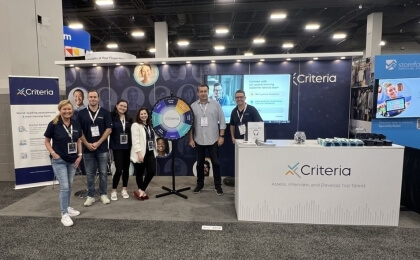Hiring can be incredibly time-consuming. Writing a great job description, reading through applications, administering assessments, scheduling and conducting multiple rounds of interviews, calling references – these activities quickly add up. The excess time spent on hiring translates directly into greater costs. And not just hiring costs but also the costs associated with leaving a vacant position open for an extended period of time, especially if it’s a key position in your organization.
While an overly long hiring process is a burden on HR and the hiring manager, it also puts you at serious risk of losing your top candidates. It’s a candidate’s market, which means job seekers have more choice than ever before. The amount of time a candidate has to spend in the application process is a key part of candidate experience, and if you move too slowly, candidates with high-demand skills might take an attractive job opportunity somewhere else before you even have a chance to make an offer. Reducing time-to-hire is one way to stay competitive in the battle for top talent.
How to Calculate Time to Hire
The calculation for time to hire (also called time to fill) is relatively simple. For an individual candidate, the time to hire is just the number of days it takes from the time you get approval to hire for the role, to the moment the candidate accepts the offer. For this metric to be more meaningful, however, it’s usually viewed as an average across the entire organization or within specific departments. Essentially you add up all the days it took to hire everyone within that year and divide by the number of positions filled.
Here’s an example: Let’s say you hired 4 people in one year, each taking 15, 25, 35, and 45 days to fill, respectively. Add these up and divide by 4 to get an average of 30 days.
According to a SHRM survey, the average time to hire is 42 days. Using this as a benchmark, the company in the example above might be in pretty good shape. However, it’s often more useful to compare your metrics with industry-specific benchmarks because it’s more representative of the labor market in that space.
Actually tracking time to hire accurately within your organization presents another challenge. Tracking them manually may be tedious, but SHRM offers some resources, such as a helpful Excel template you can use to get started. Some applicant tracking systems (ATS) also make the process a little easier by keeping track of when different roles were posted and when they were filled.
Tips for Reducing Time to Hire
Shorter time to hire is typically better, but that doesn’t mean you need to rush through the hiring process at the expense of hiring the best person for the job. After all, rushing to make a decision could lead to a toxic hire that you’ll just have to replace later on down the line.
One way to tighten up your time to hire is by reevaluating your hiring process to make sure every step is as efficient and impactful as possible. It helps to start by identifying the elements of your hiring process that are most predictive of job success. Pre-employment tests, for example, are highly predictive of long-term job success, far more than resumes, unstructured interviews, or education. Administering assessments early in the hiring process can help you quickly prioritize who you want to invite to the next step of the hiring process by highlighting the candidates with the most potential. Work samples are another great way to evaluate a candidate on the basis of a highly predictive factor, since work samples provide direct insight into a candidate's ability successfully carry out the role.
But just because resumes and unstructured interviews aren’t as predictive of success as pre-employment tests or work samples doesn’t mean you need to get rid of them in order to speed up the hiring process. It just means that you can incorporate more predictive tools to help you prioritize your candidate pipeline so that you don’t have to go through quite as many resumes and interviews.




